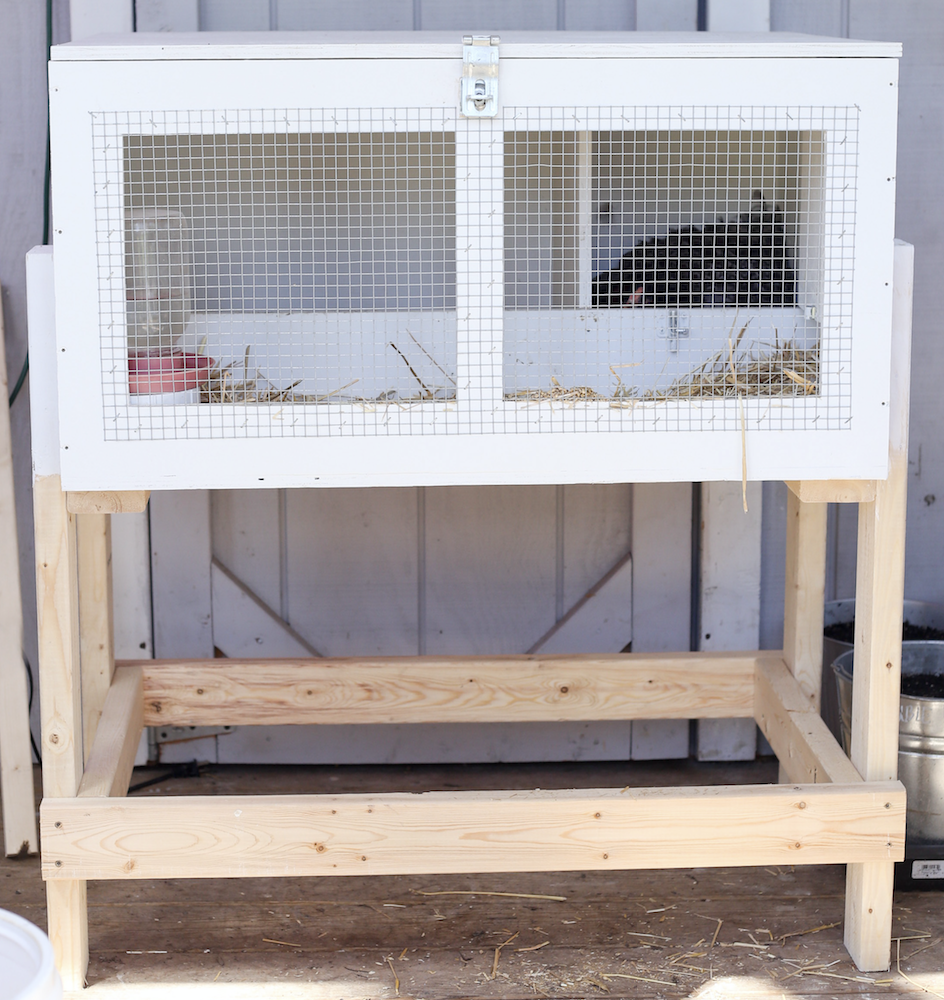Building a brooding box is an essential part of chicken husbandry. It provides young chicks with a safe environment to grow and develop until they are ready to be moved to a larger coop. This step-by-step guide will show you how to construct a brooding box that is both practical and comfortable for your chickens. With the right tools and supplies, you can easily build a brooding box that will give your chicks the best start in life.
Step-by-Step Instructions
Cut the Plywood
Using a jigsaw, cut a piece of plywood to the desired size for the bottom of the brooding box. If you plan to make the box removable, cut a second piece to the same size for the top.
Assemble the Box
Using wood screws, assemble the bottom and sides of the box. If making the box removable, attach the top to the sides with hinges.
Add the Heat Lamp
Using a drill, make a hole in the top of the box for the heat lamp. Attach the heat lamp securely and plug in the electrical cord.
Install the Thermometer
Mount the thermometer on the inside of the box. This will allow you to monitor the temperature inside the box and make adjustments as needed.
Add the Bedding
Fill the bottom of the box with clean, dry bedding. This will provide a warm and comfortable area for the chicks to sleep and move around.
Set the Temperature
Adjust the heat lamp so that the temperature inside the box is between 95-100°F. Monitor the temperature regularly and make adjustments as needed.
Introduce the Chicks
Carefully transfer the chicks into the brooder box. Make sure the temperature is at a comfortable level for the chicks and that the bedding is clean and dry.
Building a brooding box is a simple process that can provide a safe and comfortable environment for your chicks. With the right materials and a few simple steps, you can easily create the perfect home for your chickens.
Frequently Asked Questions
What Type of Materials Do I Need to Build a Brooding Box for Chickens?
To build a brooding box for chickens, you will need wood, screws, hinges, wood glue, a saw, and a drill. You should use weather-resistant, untreated wood, such as cedar, fir, or pine, to ensure your box lasts. Additionally, you will need wire mesh, a thermometer, and a light bulb to complete the box.
How much space should I allow for each chicken in the brooding box?
- Minimum Space: Each chicken in the brooding box should be provided with a minimum of 0.3 square meters of floor space.
- Maximum Space: For larger breeds, the maximum space should be 0.6 square meters per bird.
- Chickens per Square Meter: Up to 16 chickens can be kept in one square meter.
When calculating the space needs of your chickens, it is also important to consider the age of the chickens and the type of birds you are keeping. For example, younger chicks require more space than older birds. For best results, provide the most amount of space possible for each bird.
What Temperature Should the Brooding Box be Maintained at?
The temperature inside the brooding box should be kept at a steady 95-97°F (35-36°C) for the first week and then lowered by 5°F (2.8°C) each week until the chicks are fully feathered. A thermometer should be used to monitor the temperature inside the brooding box.
If the temperature is too low, the chicks will get chilled and will not eat or drink, eventually leading to death. If the temperature is too high, the chicks will get overheated and may die from heat exhaustion.
What is the best way to keep the brooding box clean and sanitary?
- Clean the box regularly. Clean the box often to prevent the spread of bacteria and parasites. Use a mild detergent and warm water to wipe down the interior walls and bottom of the box. Change the bedding frequently to reduce the risk of contamination.
- Disinfect the box. Dilute a small amount of bleach in water to disinfect the box. Make sure to rinse the box thoroughly with clean water after disinfecting.
- Maintain good ventilation. Poor ventilation can lead to the buildup of bacteria and harmful molds in the box. Make sure to keep the box well-ventilated to prevent the growth of bacteria and other contaminants.
- Monitor the temperature. The temperature inside the box should be monitored to ensure that it is not too hot or too cold. If the temperature is not suitable, adjust it accordingly.
How often should I check on the chickens in the brooding box?
Daily:
- Check water supply and top up if necessary.
- Observe the chicks for signs of distress.
- Ensure that the temperature is suitable for the chicks.
- Check for any abnormal behaviour.
- Check the bedding for signs of soiling or contamination.
Weekly:
- Monitor the growth of the chicks.
- Check the feeder for signs of contamination.
- Check for any signs of mites or other parasites.
- Check that the chicks have enough space to move around.
- Check the ventilation and make sure it is adequate.
Monthly:
- Clean the brooding box thoroughly.
- Replace the bedding if necessary.
- Check for any structural damage to the brooding box or its components.
- Check for any signs of disease or illness in the chicks.
- Check the temperature and make any necessary adjustments.
Conclusion
Building a brooding box for chicken husbandry is a relatively easy and straightforward process, and one that pays off in the long run. With the right materials, tools, and a few simple steps, you can construct a safe and efficient brooding box that will provide your chickens with a secure and comfortable environment.
